
The Definitive Guide to Responding to Government RFIs, RFQs, RFBs, and RFPs for Body Armor
Most body armor procurement bids aren’t lost on performance; they’re disqualified on process. Long before pricing or technical review, submissions fail for expired registrations, missing documentation, or inaccurate NIJ compliance claims. In government contracting, precision and procedural discipline matter as much as ballistic performance. This IntelAlytic guide shows how armor manufacturers, distributors, and suppliers can organize, shred, and submit fully compliant government bids. Learn how to meet procurement eligibility, align with NIJ standards, and compete confidently across city, state, federal, and cooperative levels.

7 Red Flags and False Claims to Watch for When Buying Body Armor in 2026: A Buyer’s Guide for Law Enforcement, First Responders & Procurement Teams
Body armor buyers in 2026 face more misinformation than ever, from false NIJ compliance claims to unverified “special threat” plates. This guide explains the 7 biggest red flags to watch for — pricing that’s too good to be true, vague material descriptions, missing lab reports, and new shell companies — and clarifies when non-NIJ armor may still be appropriate. Learn how to verify products, companies, and certifications using IntelAlytic and The Armor List.

“NIJ Certified” Body Armor Is a Myth – Here’s the Truth About Real NIJ Compliant Armor (2025 Update)
“NIJ certified” is a myth. And one that continues to mislead buyers, sellers, and even manufacturers. The National Institute of Justice does not certify body armor; it defines performance standards and oversees the Compliance Testing Program (CTP) that determines which models appear on the official Compliant Products List (CPL). In an industry where accuracy saves lives, using the right terminology matters. This article explains what NIJ actually does, why the “NIJ certified” claim persists, and how to verify legitimate compliance through the NIJ CPL and The Armor List.
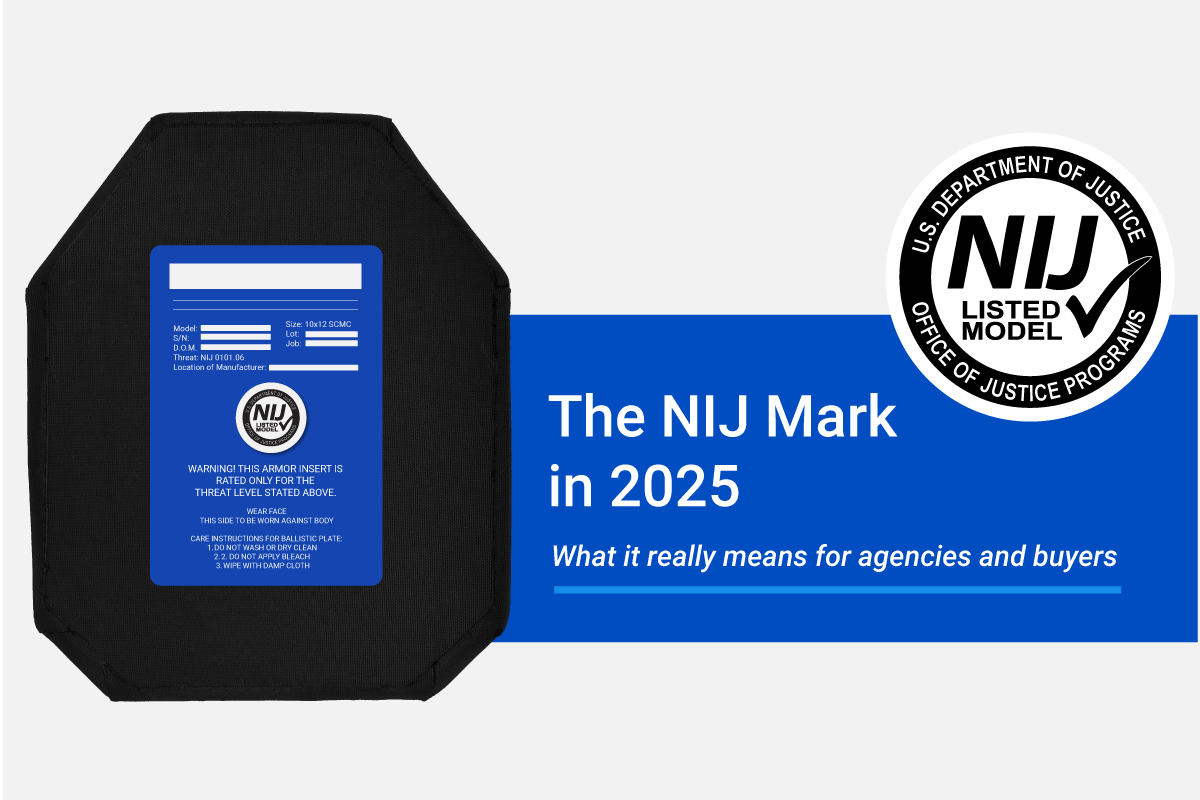
The NIJ Mark in 2025: The Complete, Definitive Guide to What It Means, How It Works, and How to Use It Correctly (NIJ 0101.06 & NIJ 0101.07)
The most complete and authoritative guide to the NIJ Mark in 2025. Learn what the mark means, how it must be used, the difference between NIJ testing and NIJ compliance, and why misuse remains widespread across the industry. Relevant for NIJ 0101.06 and NIJ 0101.07.

Milipol Paris 2025: The Golden Circle Roadmap – How Global Body Armor Manufacturers Can Responsibly Support U.S. Procurement Through Smart Distribution, Standards Alignment, and Supply Chain Strength
The U.S. body armor market increasingly depends on global raw materials and manufacturing from Europe, Asia, and APAC—including aramid fibers, UHMWPE composites, laminates, carrier textiles, and international finishing capabilities. As NIJ 0101.07 testing expands and domestic capacity tightens, qualified international manufacturers aligned with NIJ, VPAM, CAST, and STANAG standards can help fill urgent procurement gaps while maintaining compliance and supply chain transparency.

NIJ 0101.07 Is Live — But the CPL Isn’t: What Buyers and Sellers Must Know in 2025
NIJ 0101.07 and 0123.00 are officially in effect — but the Compliant Products List (CPL) hasn’t caught up yet. As testing moves forward through 2025, many “0101.07 certified” claims circulating the market are false. IntelAlytic breaks down what’s real, what’s not, and how buyers and manufacturers can navigate the transition with confidence.

Understanding NIJ Soft Armor Panel Sizes: What C1 to C5 Really Mean for Buyers
Learn what NIJ C1–C5 soft armor templates really mean, how they map to consumer sizes, and why panel area drives compliance. Backed by IntelAlytic + The Armor List.
URL Slug: nij-soft-armor-panel-sizes-c1-to-c5-buyers-guide
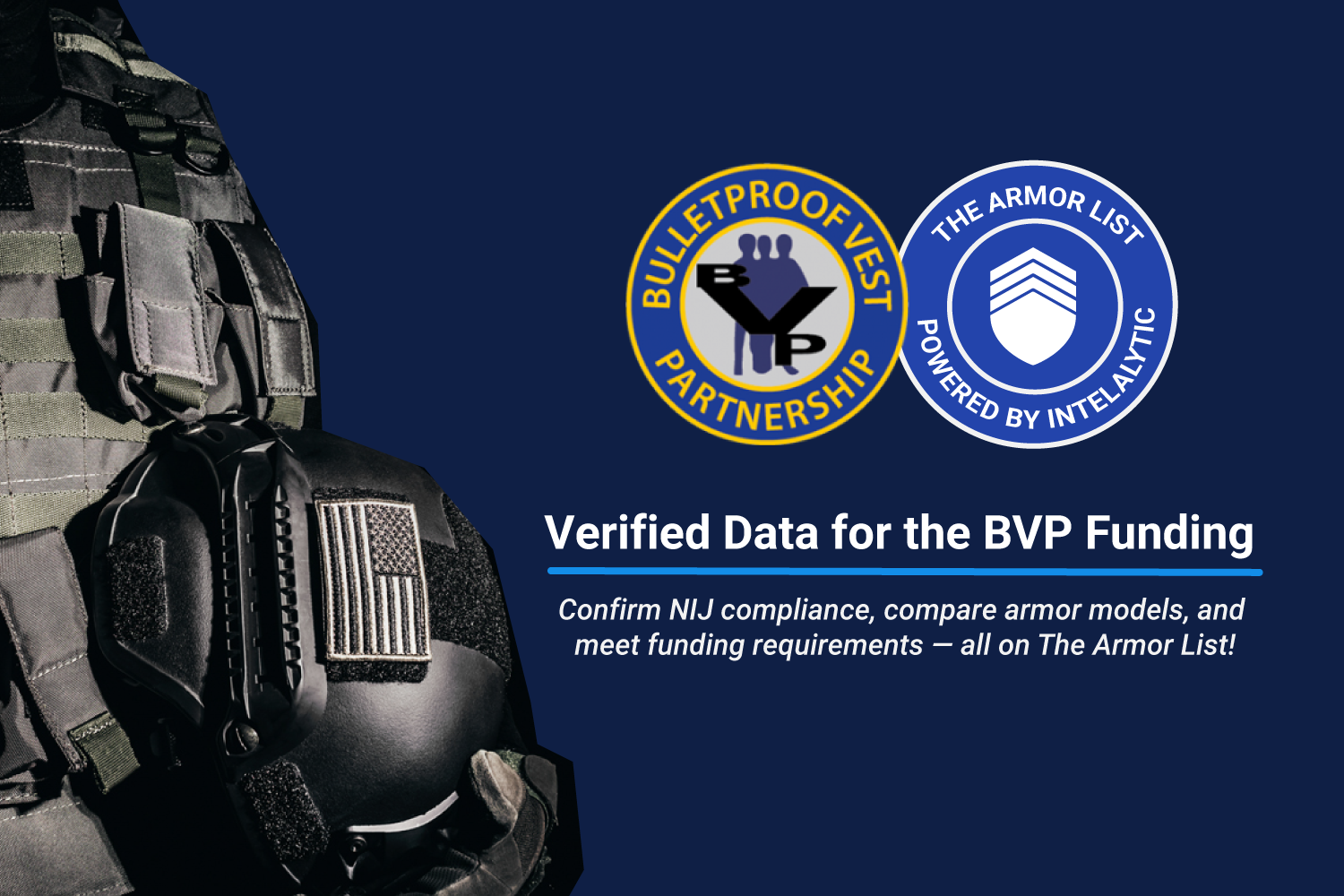
The Patrick Leahy Bulletproof Vest Partnership: A Guide to Protecting Officers with IntelAlytic and The Armor List
For law enforcement agencies, officer protection isn’t optional — it’s mission critical. The Patrick Leahy Bulletproof Vest Partnership (BVP), administered by the U.S. Department of Justice, provides essential funding that helps departments nationwide purchase NIJ-compliant armor. Since 1999, more than 1.5 million vests have been reimbursed under this program, yet many agencies still face confusion over product eligibility, documentation, and compliance tracking. IntelAlytic and The Armor List simplify this process through verified NIJ data, educational resources, and procurement guidance that ensure every purchase aligns with national standards and audit-ready documentation.
Precision in Practice: Optimizing Documentation and Data Tracking for Body Armor R&D
In ballistic armor development, documentation isn’t paperwork — it’s proof. From R&D to certification, every record, test, and material batch must be traceable, verified, and audit-ready. This article outlines a seven-step documentation and data-tracking lifecycle that helps body-armor manufacturers align with NIJ, ISO 9001, and BA 9000 requirements — ensuring data integrity, compliance, and confidence in every certified model.
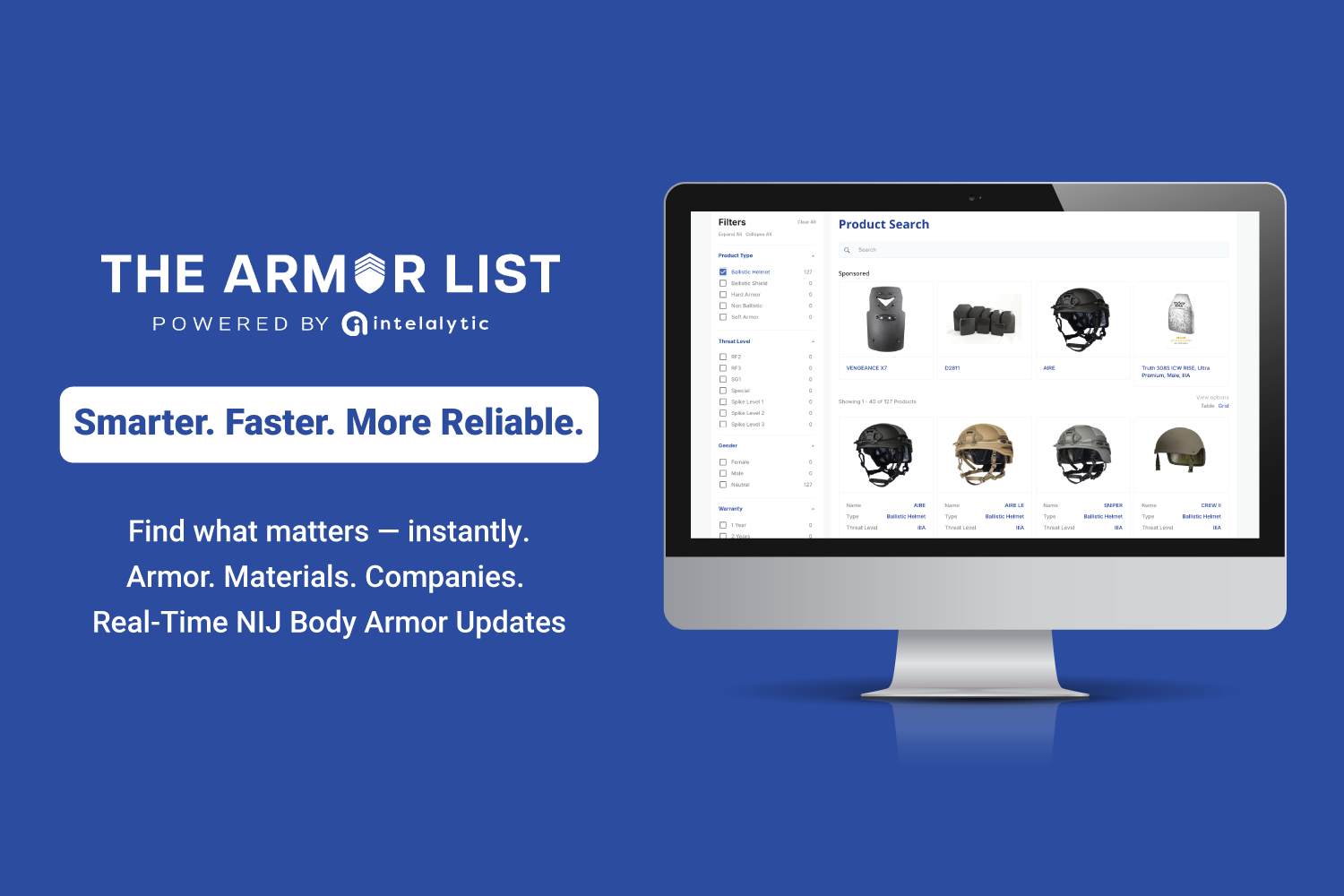
The Armor List: Smarter Data, Faster Performance, and Real-Time NIJ Body Armor Updates
The Armor List, powered by IntelAlytic, continues to evolve as the trusted data platform for the law enforcement and armor community. The latest update brings faster performance, smarter search, and real-time NIJ certification integration — ensuring agencies, procurement teams, and manufacturers always have verified, current, and actionable armor data at their fingertips.
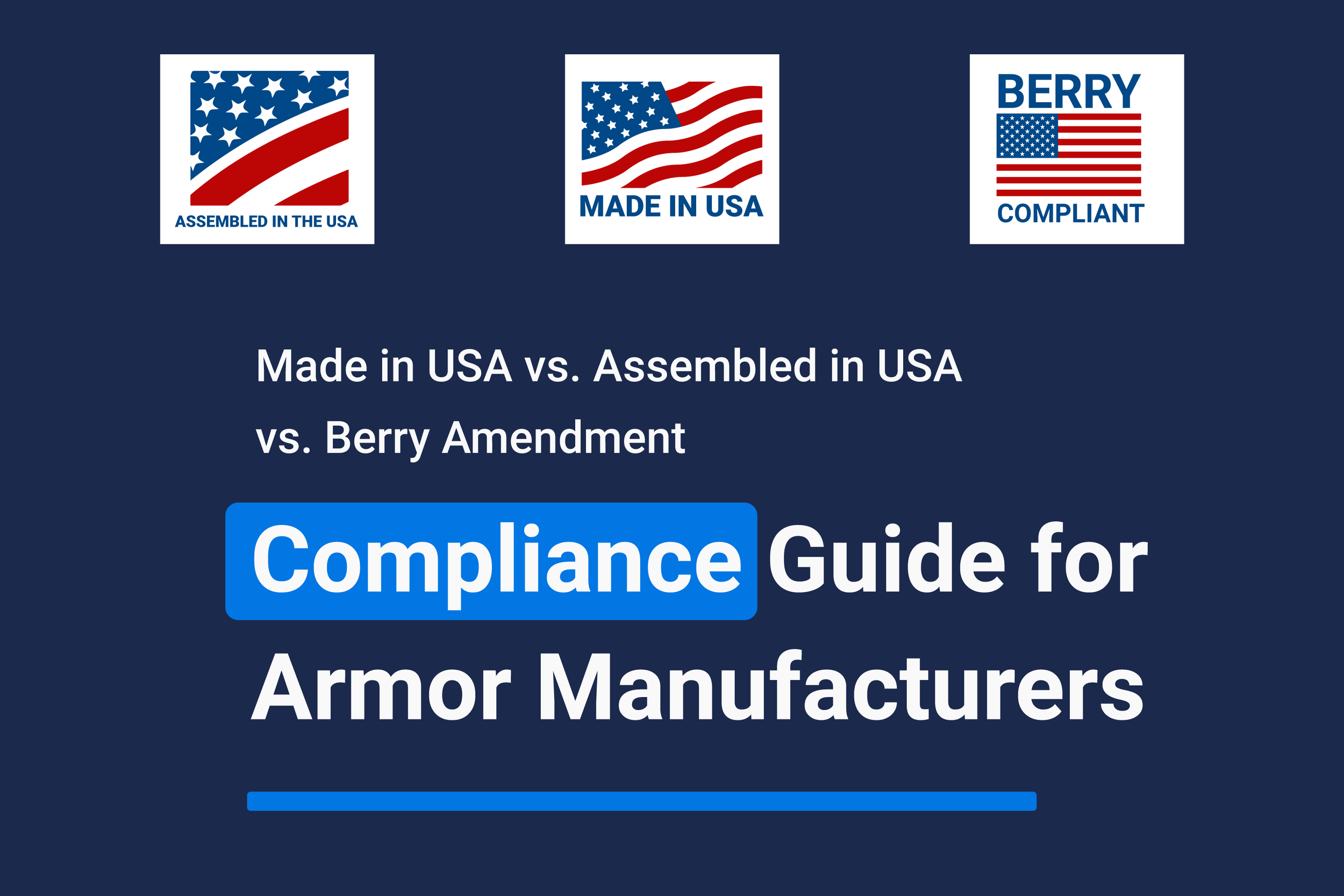
Made in USA vs. Assembled in USA vs. Berry Amendment | Compliance Guide for Armor Manufacturers
Understanding the difference between “Made in USA,” “Assembled in USA,” and Berry Amendment compliance is critical for defense and armor manufacturers. Each label carries specific legal and sourcing requirements—with major consequences for missteps. This IntelAlytic guide breaks down the FTC’s domestic origin rules, DoD’s Berry sourcing mandates, and practical steps to protect your company from costly compliance risks.
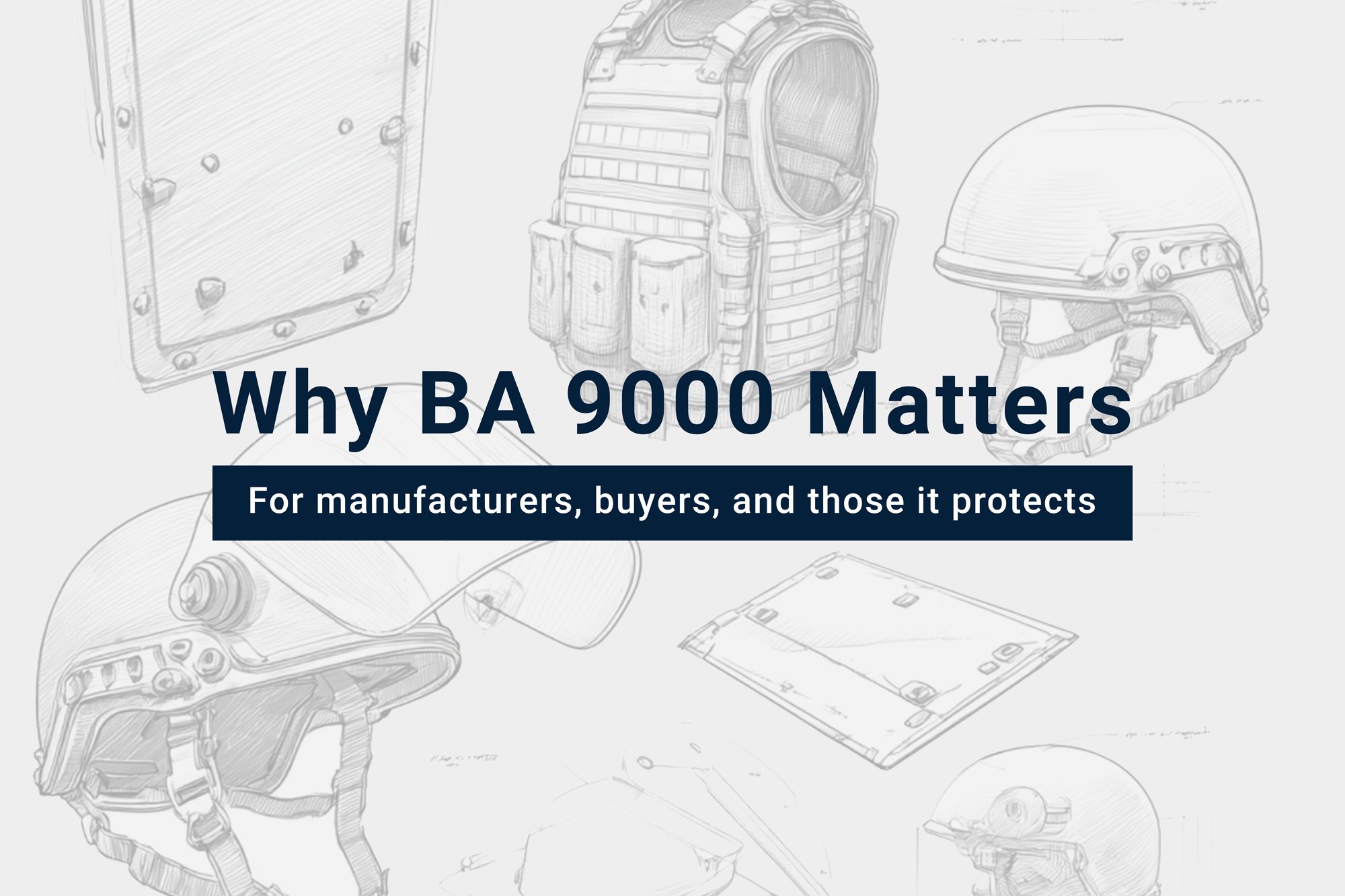
BA 9000 Certification: Boosting Quality, Compliance, and Edge in Ballistic Armor
BA 9000 certification is no longer optional in the ballistic armor industry—it’s the benchmark that defines credibility. For manufacturers, it means higher upfront costs but stronger bids and reduced risk. For buyers, it streamlines sourcing through pre-vetted, compliant suppliers. And for end users, it guarantees armor that performs as tested. By 2025, nearly every leading U.S. manufacturer has integrated BA 9000, while non-certified firms are increasingly left out of major procurements.
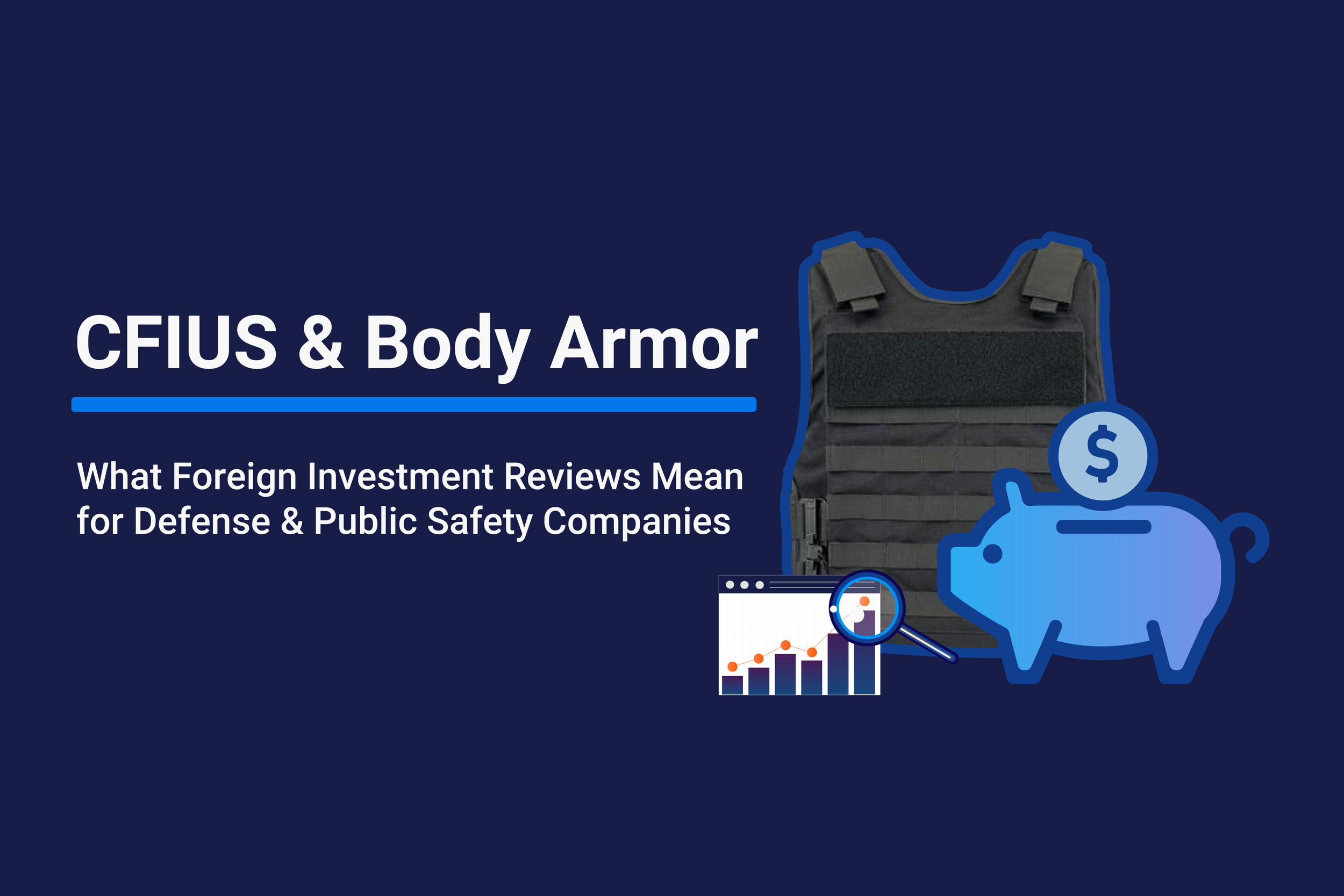
CFIUS and Body Armor: What Foreign Investment Reviews Mean for Defense and Public Safety Companies
Understanding CFIUS is critical for body armor companies facing foreign investment or acquisitions. Foreign capital can fuel growth, but it also raises national security concerns when ballistic-resistant technologies and NIJ-certified products are involved. The Committee on Foreign Investment in the United States (CFIUS) determines whether such deals pose risks to U.S. security, evaluating supply chains, sensitive technologies, and government contracts. This article breaks down how reviews work, the agencies involved, and the compliance steps armor manufacturers and suppliers must take.

FBI STEAL Contract: A Comprehensive Guide for the Agency & Suppliers
The FBI recently awarded twelve small businesses places on its Strategic Tactical Equipment and Logistics (STEAL) contract vehicle — a procurement program worth up to $690 million in total capacity. For law enforcement agencies, manufacturers, and suppliers, this contract represents both opportunity and responsibility. Below, we break down what STEAL is, who the awardees are, how the order process works, and what it means for the body armor and tactical gear market.
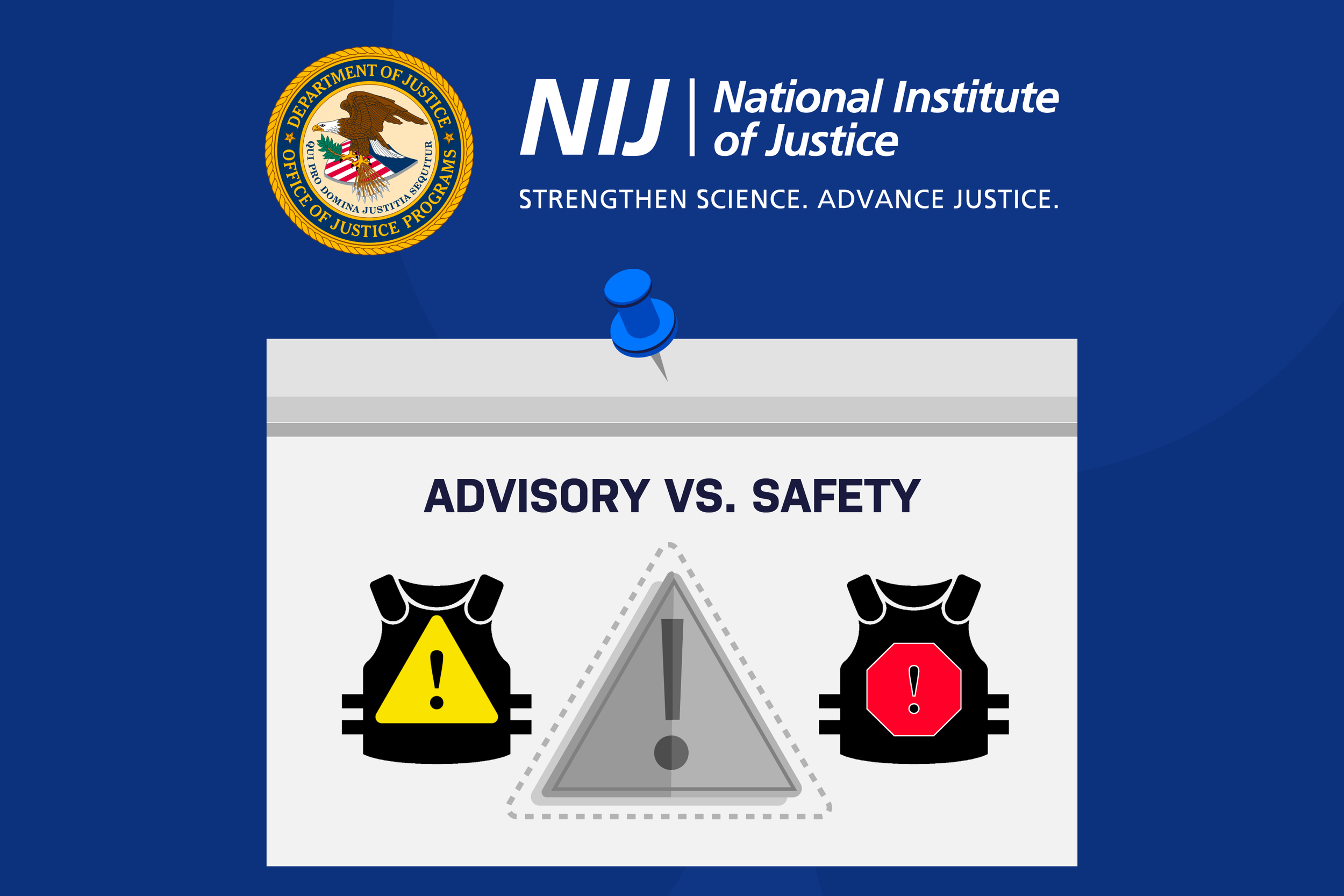
NIJ Advisory Notice vs. NIJ Safety Notice: What They Mean for Body Armor (XR32 & ShotStop Explained)
When a body armor model drops off NIJ’s Compliant Products List, the impact is immediate—procurement stalls, grants are at risk, and agencies face tough decisions about fielded gear. This article breaks down the difference between Advisory and Safety Notices, how the process unfolds, and what recent cases like XR32 and ShotStop reveal about compliance, risk, and response.

NIJ vs. VPAM: Comparing the World’s Leading Ballistic Protection Standards
When it comes to body armor, not all standards are created equal. The U.S.-based NIJ 0101.07 and Europe’s VPAM protocols represent two of the most recognized ballistic testing systems in the world—each with unique approaches to evaluating protection. From handgun and rifle threats to armor-piercing rounds and vehicle kits, this article breaks down how NIJ and VPAM differ in testing methods, performance metrics, and real-world applications. Whether you're supplying law enforcement or outfitting NATO forces, understanding these standards is critical to mission success.
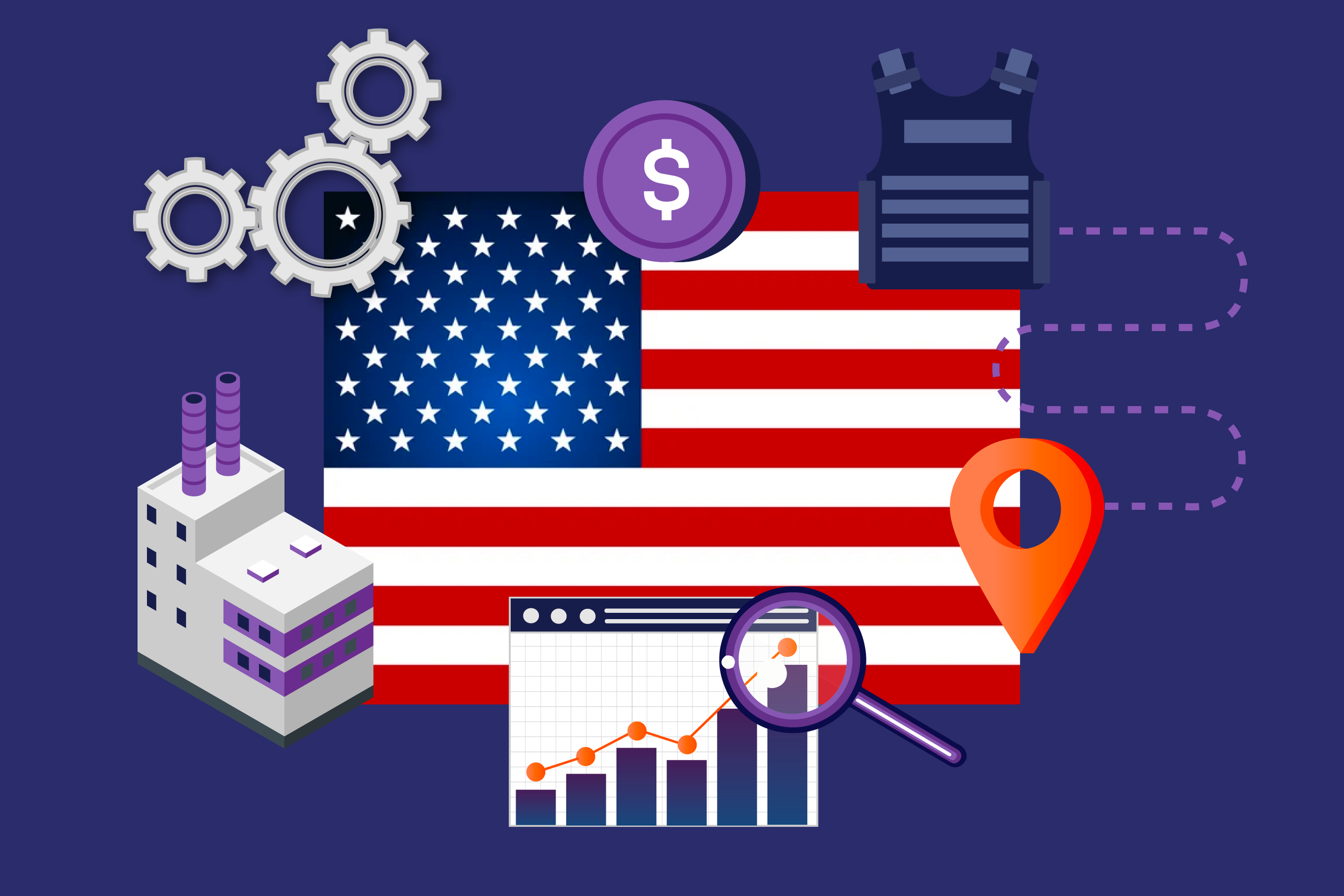
America First, Armor First: How Trump’s Return Could Redefine U.S. Body Armor Manufacturing and Defense Supply Chains
Trump’s return brings a renewed "America First" push, prioritizing Buy American mandates, higher defense spending, and domestic manufacturing incentives. This could boost U.S. body armor production, ensuring top-tier protection for law enforcement and military personnel. Yet, challenges like high costs, supply chain hurdles, and trade risks remain. Success hinges on smart execution. With IntelAlytic for insights and The Armor List for procurement, industry leaders can adapt and thrive in a reshaped defense market.

Trade Wars and Tariffs: Challenges and Solutions for the Body Armor Industry
Rising trade tensions between the U.S., China, Canada, Mexico, and Europe are driving up costs and disrupting supply chains for body armor manufacturers. With key materials like aramid fibers, UHMWPE, and ceramics facing tariffs and supply instability, companies must adapt or risk falling behind.
This article examines the impact of tariffs on production costs, logistics, and global competitiveness—while exploring solutions like supplier diversification, automation, and strategic contracting to navigate the challenges of an uncertain trade landscape.
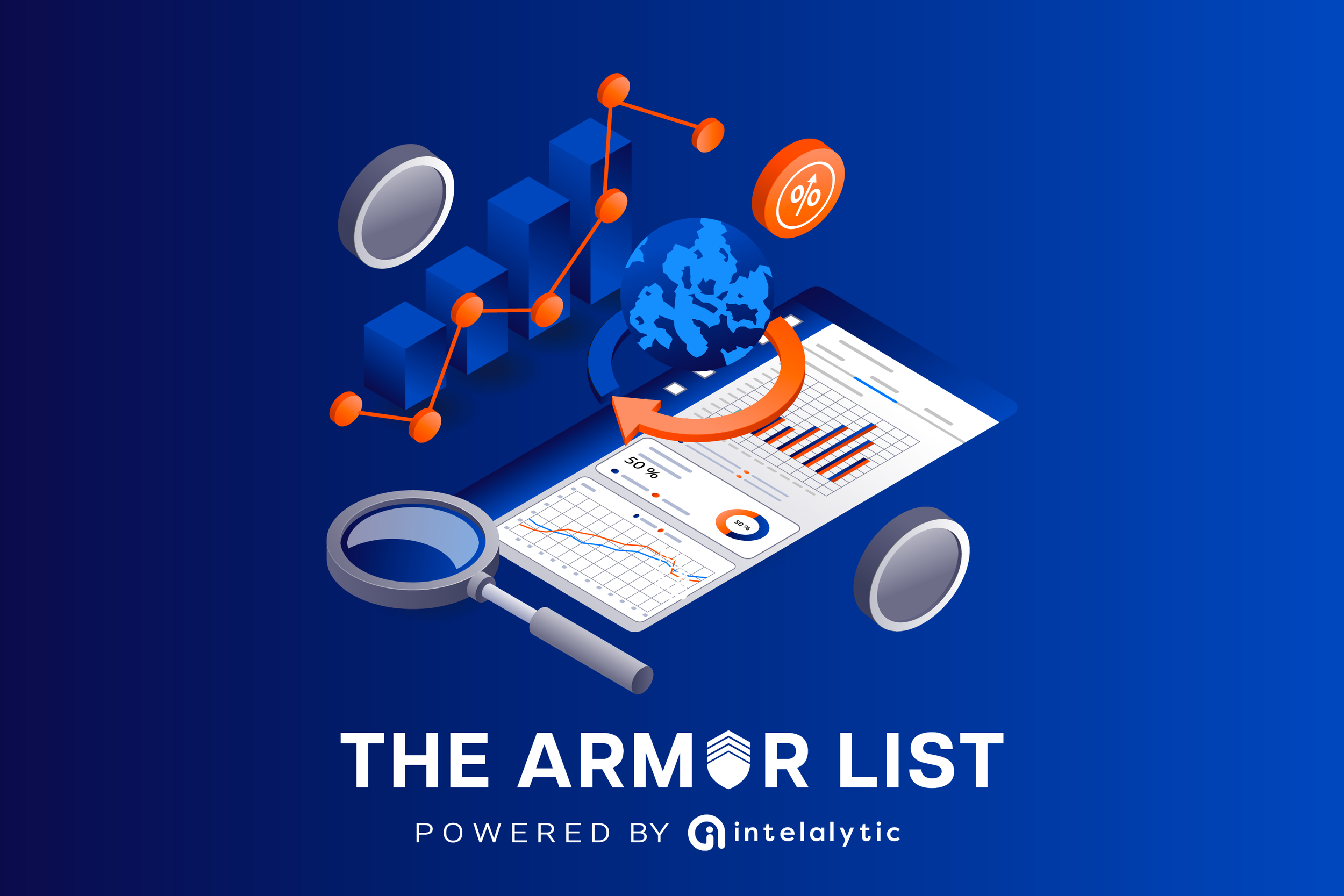
The Armor List: Know More, Risk Less.
The “The Armor List” is set to change the way decisions about body armor are made. Launching in January 2025, this unique platform from IntelAlytic brings together trusted data, clear insights, and practical tools in one place. It’s designed to solve the challenges the industry faces today—disconnected information, unreliable false claims, and unreliable marketing hype. More than just a tool, The Armor List represents a mission to improve the truth about companies, products, and materials in the ballistic-resistant protective product market.
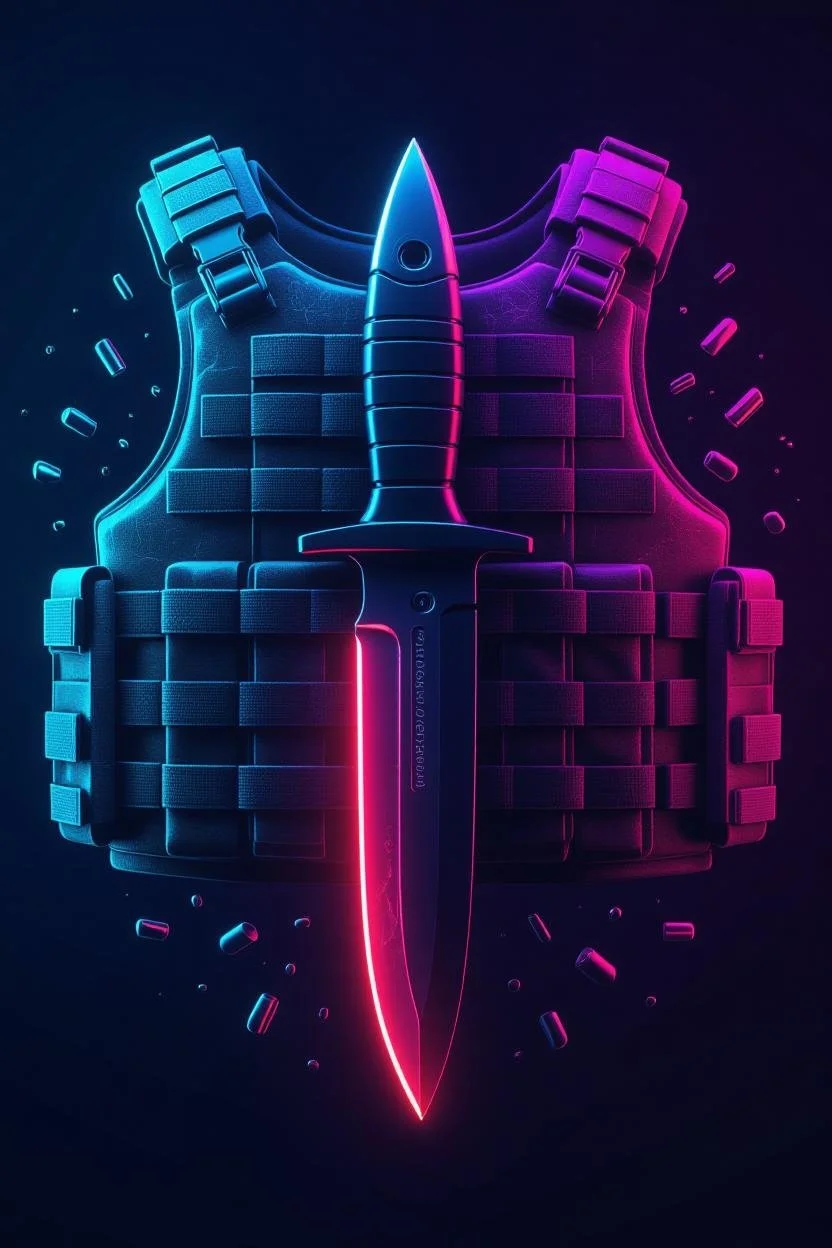
Advances in Multi-Threat Body Armor: Balancing Ballistic, Stab, & Blunt-Force Protection
Modern body armor must do more than stop bullets. Today’s operators face combined threats: ballistic, stab, and blunt force, and armor systems are evolving to provide layered protection without sacrificing mobility or comfort.

